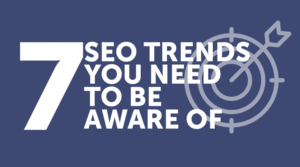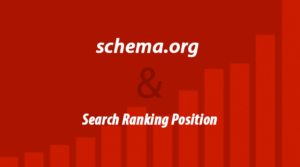A 10-Step Plan for How To Recover From Penguin 2.0

If your site recently took a hit in the search engine rankings, there’s a good chance that you were impacted by Google’s Penguin 2.0 update. Rolled out on May 22nd, Penguin 2.0 was a continuation of the earlier Penguin updates designed to penalize sites engaged in abusive SEO practices. While the earlier, feared Panda updates targeted site quality, the Penguin updates are all about dubious link profiles, anchor text issues, and keyword stuffing.
In other words, if you’ve been engaged in Black Hat SEO tactics or working with an SEO firm that has, your search engine rankings might have dropped significantly.
What’s behind Penguin 2.0?
While Penguin 2.0 is a fairly new phenomenon and we’re still determining the full extent of the update, we learned a lot from Penguin 1.0. The Penguin updates are geared toward removing webspam. The main indicator that’s being looked for is bad inbound linking profiles. Some examples of links that are likely to get you in trouble include:
- Mass updates to low quality directories
- Blog links from comment spam or posts not relevant to your niche
- Over 30% of your link profile has exact match anchor text
- Paid links
- Advertorial links
Other sites that may have been affected include sites that were hacked or those that were very light on quality content. Strong sites in selected keyword searches also likely got a boost in the search results if they have high quality content and solid link profiles.
Despite many webmasters being frustrated at Google’s algorithm changes, it’s important to look at it in the context of a search engine’s mission. The goal of Penguin is simple: to provide a better experience for searchers. This can easily be reflected in the cycle of the web. As webmasters become more adept at manipulating rankings, search engines have to become more sophisticated at weeding out spam.
This causes an unending cycle, with a series of updates being released over time to help search engines serve up better sites for a range of queries. Webmasters, in turn, have to develop and adapt their approach to evolve with these changes. If you’ve been affected by Penguin 2.0, don’t worry. Below is a ten-point plan to help you evaluate what’s going on and plan the fastest route to recovery.
How to Recover from Google Penguin 2.0
Step 1. Don’t panic:
Whether you’re facing the consequences of bad decisions in the past or simply a victim of the numbers, it’s important not to do anything that you’ll regret. Remember, there’s a strong possibility that it was black-hat techniques such as bad links or keyword stuffing that got your site where it is today. The first and perhaps most important step to staging a recovery effort is to accept responsibility and commit to a different path forward.
If you know specifically what the issue was that got you here, then the good news is that it’s possible to correct your course by avoiding those behaviors and employing white-hat tactics going forward. If you’re in a state of confusion about what went wrong, decode what happened (or hire an agency to figure it out for you) and educate yourself so that it doesn’t happen again.
Step 2. Focus on the future and stay flexible:
The reason that black-hat techniques stay popular is because they work –but usually only for a little while. An unknown site can skyrocket to the top of the SERPs, gaining visibility and generating a profit. But eventually the search engines catch on and SEO karma slams down. All the time, effort, and money invested becomes nullified. These webmasters aren’t usually lucky enough to survive at the top of the SERPs for long enough to turn any profit. Instead, it’s important to establish a long-term goal and be committed to working toward that.
Another important aspect of planning for the future is to recognize that change is the name of the game on the web. Search engines are always working to weed out weak sites, and over time, the definition of a good site is becoming increasingly rigorous. Accept that the landscape is constantly changing and commit to evolving with it – in a strategic, ethical, and sound way.
Step 3. Immediately stop whatever got you in trouble:
It’s important to stop and ask yourself what precipitated your current predicament. If you’re currently working with an SEO firm, buying mass links, or using automated bookmarking software (just as an example), take a good look at your SEO big picture. Anything that got you in trouble needs to be ruthlessly let go of – now, before you start the process of analyzing and trying to repair your situation.
Stop using sketchy software. Cancel ongoing orders with link buying providers. Fire the SEO firm that’s making questionable decisions with your online real estate. Be quick and decisive. Look at this opportunity to sweep the decks as an important step forward, and a smart decision to make sure that you avoid any dubious decisions as you move forward. Don’t be afraid of awkward conversations. Simply say that you’re committed to a new approach moving forward, and call it a day.
Step 4. Perform a site link audit:
Once you’ve been slapped with a manual penalty (which you’ll know about via your Google Webmaster Tools dashboard) you’re officially in emergency territory. Since the heart of Penguin 2.0 is about bad linking, it’s time to get familiar with what your link profile looks like. If you’re not comfortable doing this yourself, hire a trusted SEO firm to do a full link audit and report back to you with the results.
The goal of this audit is to paint a picture of your inbound link profile in order to identify instances of over-optimization (such as over-optimized anchor text) that are likely playing a major role in your Google penalization. This audit is also necessary for identifying exactly which links are causing the problem, so a specific action plan to remove the links (and disavow them) can be enacted. Once the links are removed (and then disavowed), a reconsideration request with the details of the removals/disavowals can be filed, which is the only way to get back in Google’s good graces following a manual penalty. If your website was hit by Penguin but not assigned a manual penalty, then a reconsideration request is unnecessary, but the link removals and disavowal process is still mandatory if you want any hope of recovery.
Doing it yourself isn’t difficult if you’re tech-oriented, but it is time-consuming. You can save time by downloading and installing various software tools like Scrapebox, but these tools cost money and have a learning curve.
The easiest way to get started is to download a list of your incoming links via Google’s Webmaster Tools. This gives you an overview of all the links that Google currently associates with your site.
To access your inbound links from Google Webmaster Tools, here’s the simple six-step process:
- Login to Google Webmaster Tools
- Click your Website
- Click “Traffic” on the left navigation
- Click “Links to your site”
- Click “Who links the most”
- Click “Download latest links”
Step 5. Evaluate your links:
Once you’ve gotten your link list, depending on the size of the list it’s important to do a thorough analysis. Here’s one strategy for doing so using Scrapebox. You’re looking for a few things. Is the same anchor text occurring too often? Are the sites that are linking to you iffy (e.g. low PageRank or Domain Authority)? Do the sites not relate to your niche?
Develop a list of the links that may be hurting your rankings. When in doubt, cut more rather than less. It hurts less to lose a couple of good links than it does to keep a few bad ones. We’ll talk more in the next step about how to cull links from your profile. Before you advance to that step, make sure that you’ve done a systematic evaluation and clearly segmented out the links that can be hurting your ranking. If you’re unsure of how to do this, consult an SEO professional.
Step 6. Cut, disavow, and otherwise remove the offending links:
Once you’ve made it this far, it’s important to remove any links quickly and efficiently. There are a number of ways that you can do this. One is by simply emailing the webmasters at the sites listed and asking them to remove the links. Another option for domains that look good but are targeting your site with over-optimized anchor text is to ask them to change the text. You can expect success 10-20% of the time, but when you’re hoping to preserve a link or avoid using the disavow tool too liberally, it can work. It’s also a necessary step before filing a reconsideration request, as the Google webspam team will check to see how much effort you put into removing links before granting favorable reconsideration.
After doing your best to remove as many bad links as possible, use the Google disavow tool. In the discussions on his Penguin 2.0 video, Matt Cutts recommends using a “machete, instead of a fine tooth comb.” Access the Google disavow tool to wipe individual links or entire domains off your link profile.
Step 7. Carefully review your site for keyword stuffing:
While it’s probably fair to say that the old formulas for keyword density (2.3% on every page! Or an equally specific formula) are no longer relevant, it’s important to evaluate your site for keyword stuffing. This is a tactic that’s just as bad as bad link profiles, and another (although less prominent) target of Penguin 2.0.
Check your site’s metatags for keywords that aren’t relevant to your core messaging or are repeated too frequently. Other places to check include page titles, alt text for images, and usage throughout the body of individual articles. If any of your content reads as though it’s been overly optimized, edit it or have it rewritten (or remove it entirely if it isn’t salvageable).
Step 8. Develop your onsite content strategy:
Once your link profile is clean, it’s important to make sure that your overall site structure is sound and geared at the keywords you’re targeting. Take a closer look at your keyword list and the structure of your site. Does your site have a solid hierarchy that supports your keyword strategy? If not, it’s time to start developing pillar content that you can link to and rank for in terms of the relevant keywords.
An active blog is a great way to develop a repository of content that targets your most valuable terms. A regularly updated site will help your rankings on freshness criteria, and vastly increase the number of terms for which you can rank. Ideally, pages on your site should be a minimum of 500 words. Writing should be as high-quality as possible, with good grammar and spelling, a strong relevant lead paragraph, and a focus on delivering real value to your audience. Write for your customers first, and the search engines will pick up on necessary indications of quality.
Step 9. Build high-quality links:
If bad links from spammy directories or ad hoc blog comments got you in trouble, it’s time to reframe your approach to SEO. One great way to do this is by guest blogging. When guest blogging, find sites that are highly relevant to your niche. Ideally, the sites that you’re targeting should also meet a minimum standard quality. A set of criteria that I’ve found useful is a PageRank of 3 and a Domain Authority of at least 25.
When possible, also look for sites that have an active audience. Two ways to evaluate this point are to look for social signals and to look for comments and interaction on each post. Write the best post you can, and link back to your site from the article or the author bio. Repeat this process as much as possible, and you’ll start to build the kind of authoritative, quality link profile that Google rewards. If you’re looking to diversify beyond guest posting, here are eight other ways to build links ethically.
Step 10. Understand it takes time:
Your site’s rankings may have tanked seemingly overnight, and you’re probably anxious to get back on the front page of the search results. Understand that reaching the first page for your target keywords is going to take time. Your site needs to be indexed and ranked again, and it may take time for you to regain Google’s trust.
If you used the disavow tool, submit a reconsideration request to Google (note: this is only going to be helpful if you have a manual penalty in place, which will be indicated via Google Webmaster Tools). Take the time to be very thoughtful in your request, and don’t send it until you ensure that you’ve removed as many bad links as possible. If you can show evidence of improving the quality of your site – either through limiting keyword stuffing or by adding great new content – use that to your advantage. Otherwise, keep making improvements to your site and working to build the best links possible.
Getting hit with Penguin 2.0 was probably a big blow. Recovering from this, if you’ve been affected, is no small task. The good news is that it’s very possible to get great rankings again if you approach your recovery in a systematic way. Has your site been affected by Penguin 2.0? What steps are you taking to recover? Let me know in the comments below.
 SEO is Evolving: Trend You Need to Know About [Infographic]
SEO is Evolving: Trend You Need to Know About [Infographic] Does schema.org Markup Really Improve Google Search Ranking Position?
Does schema.org Markup Really Improve Google Search Ranking Position? How SEO Services Can Help Increase Your Website Traffic
How SEO Services Can Help Increase Your Website Traffic The Impatient Newbie’s Guide to SEO
The Impatient Newbie’s Guide to SEO